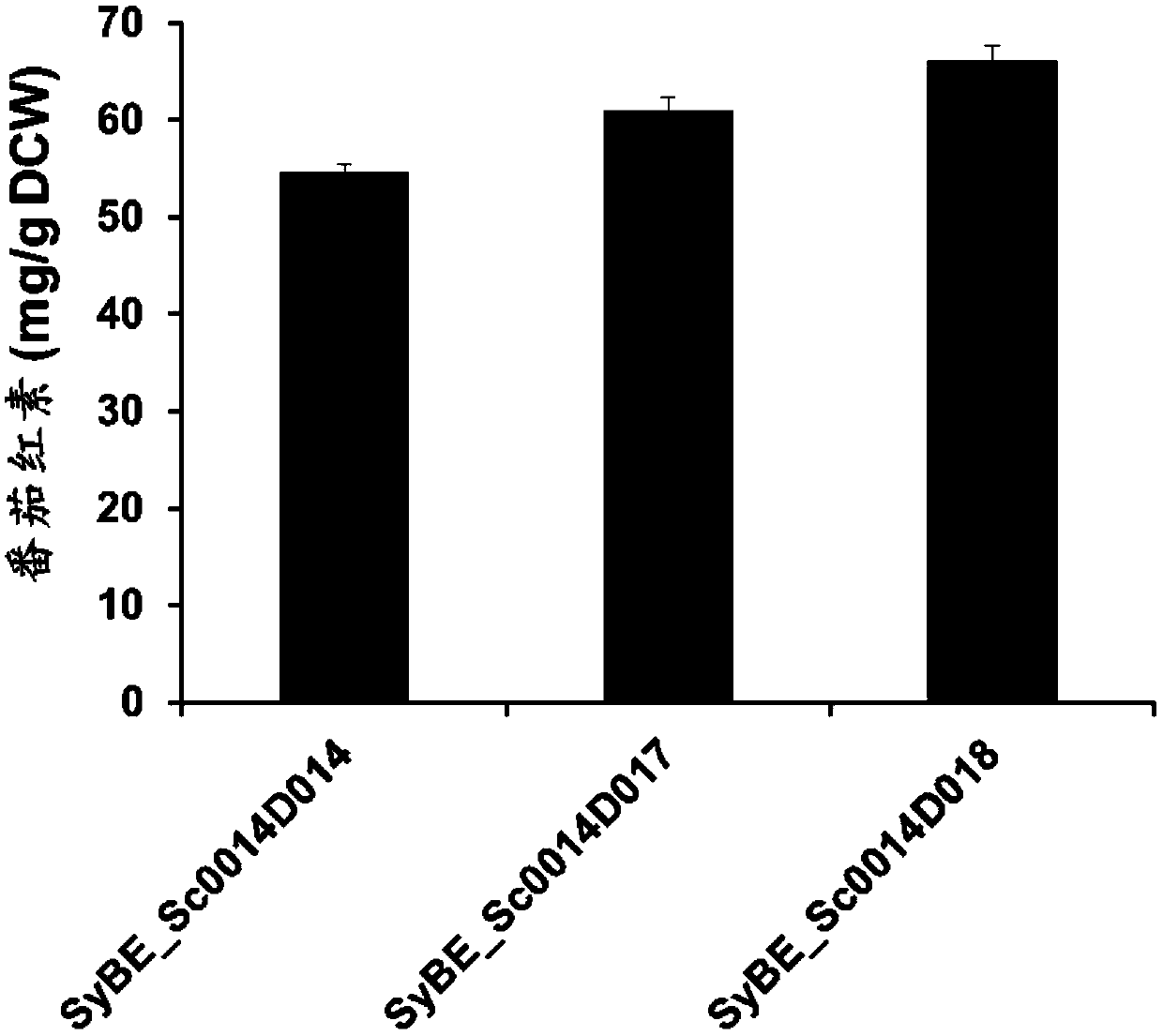A kind of recombinant yeast strain and its construction method and application
A technology of Saccharomyces cerevisiae strains and strains, applied in the field of genetic engineering, to achieve the effect of increasing synthetic yield
- Summary
- Abstract
- Description
- Claims
- Application Information
AI Technical Summary
Problems solved by technology
Method used
Image
Examples
Embodiment 1
[0092] Example 1: Construction of gene knockout strains
[0093] Using Saccharomyces cerevisiae CEN.PK2-1D as the starting strain, construct the four-gene knockout strain CEN.PK2-1C △gal1,△ gal7,△gal10::DR , △ypl062w::kanMX . The specific process is as follows:
[0094] build first Δgal1, Δgal7, Δgal10::DR-Kl URA3-DR Knockout box, i.e. knockout box fragment 1, with plasmid pWJ1042 as a template, design upstream and downstream primers PCR amplification band gene upper and lower stream 40bp homology arms and DR-K1 URA3-DR nutrition label knockout box fragment, utilize The yeast's own homologous recombination mechanism integrates the fragment into the yeast genome through lithium acetate yeast transformation. After transformation, SD-URA solid plate (synthetic yeast nitrogen source YNB 6.7g / L, glucose 20g / L, single-deficient uracil mixed amino acid powder 2g / L, 2% agar powder) for screening, the obtained transformants were purified and cultured and then the yeast genome ...
Embodiment 2
[0096] Embodiment 2: Construction of gene fragment 1
[0097] Amplify the CYC1 terminator, Bt crtI , GAL10 promoter, GAL1 promoter, Pa crtB , PGK1 terminator and sequentially spliced together by OE-PCR method to obtain two ends containing Hind III and xho Fragment T of I Restriction Site CYC1 -crtI-P GAL10 -P GAL1 -crtB-T PGK1 ;
[0098] At the same time, the homologous 631bp sequence upstream of the yeast trp1 site and the 733bp sequence homologous downstream of the yeast trp1 site were amplified and spliced sequentially by OE-PCR to obtain Sac I and Apa I enzyme cutting site, and contains between the yeast trp1 site and downstream homologous sequences Hind III and xho Fragmentation of the I restriction site, followed by Sac I and Apa The I restriction site is connected into the carrier pRS405 to obtain the TRP1 integration plasmid pRS405-TRP, and the fragment TRP obtained above is CYC1 -crtI-P GAL10 -P GAL1 -crtB-T PGK1 with pRS405-TRP plasmid b...
Embodiment 3
[0101] Embodiment 3: the construction of gene fragment 2
[0102] ACT1 terminator, truncated HMG-CoA reductase gene tHMGR1 , GAL10 promoter, GAL1 promoter, TMcrtE, GPM1 terminators were spliced sequentially by OE-PCR method to obtain two ends containing Bam H I and xho Fragment T of I Restriction Site ACT1 -tHMGR1-P GAL10 -P GAL1 -crtE-T GPM1 At the same time, the upstream homologous 561bp sequence of the yeast leu2 site, the LEU2 marker, the TDH2 terminator, and the downstream homologous 584bp sequence of the yeast leu2 site were spliced sequentially by OE-PCR to obtain the two ends containing Sac I and Apa I restriction site, and contains between TDH2 terminator, downstream homologous sequence of yeast leu2 site Bam H I and xho Fragments of the I restriction site, passed through Sac I and Apa The I restriction site was connected into the vector pRS405 to obtain the LEU2 integration plasmid pRS405-LEU. will result in the above fragment T ACT1 -tHMGR...
PUM
 Login to View More
Login to View More Abstract
Description
Claims
Application Information
 Login to View More
Login to View More - R&D
- Intellectual Property
- Life Sciences
- Materials
- Tech Scout
- Unparalleled Data Quality
- Higher Quality Content
- 60% Fewer Hallucinations
Browse by: Latest US Patents, China's latest patents, Technical Efficacy Thesaurus, Application Domain, Technology Topic, Popular Technical Reports.
© 2025 PatSnap. All rights reserved.Legal|Privacy policy|Modern Slavery Act Transparency Statement|Sitemap|About US| Contact US: help@patsnap.com



